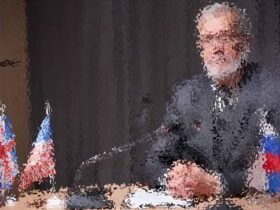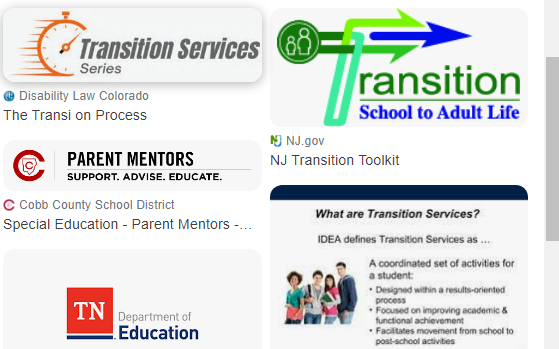Management of Special Education
LECTURE 10: NOTES
10.1 Introduction
Major initiatives towards including disabled children in ordinary schools have been taken internationally in both policy and practice. Inclusive education involves fundamentally re-thinking the meaning and purpose of education for all children and young people, a restructuring of ordinary schools. Actually, Inclusive education cannot be viewed in isolation from education as a whole.
The principle of inclusion raises fundamental questions about the nature and purpose of our education system and the part which schools play in the life of the community. Schools do not exist in a vacuum -they are part of the wider community and community life does not stop at the school gates.
School’s role is not solely to instill learning in children but should be directed at developing the child’s personality and talents, and mental and physical abilities to their fullest potential but should also be fostering respect for basic human rights and developing respect for the child’s own cultural and national values and those of others.
According to Thomas Hammarberg, the disabled child has a right to active participation in the community and the fullest possible social integration with the normal type of education. We are aiming for an inclusive school where there is a place for everyone and education is such that the school atmosphere is one that welcomes everyone.
10.2 International Perspectives on Inclusive Education
The UNESCO Salamanca declaration (1994) was a turning point in the education sector. The report from this UN’s education agency calls on the international community to endorse the approach of inclusive schools by implementing practical and strategical changes.
In June 1994 representatives of 92 Governments and 25 international organizations formed the so called World Conference on Special Needs Education and was held in Salamanca, Spain. They agreed on a dynamic new statement on the education of all disabled children which called for inclusion to be the norm
. In addition, the conference adopted a new Framework for Action, the guiding principle of which all ordinary schools should accommodate all children, regardless of their physical, intellectual, social, emotional, linguistic or other conditions. Again they declared that all educational policies should stipulate that disabled children attend the neighbourhood school that would be attended if the child did not have a disability.
10.3 UN Definition of Inclusion
UN describes inclusive education as process of addressing and responding to diversity of needs of all learners through increasing participation in learning, cultures and communities, and reducing exclusion within and from education.
It involves changes and modifications in content, approaches, structures and strategies, with a common vision which covers all children of appropriate age range and a conviction that it is the responsibility of the regular system to educate all children. (UNESCO, 2008)
UN statement on inclusion begins with a commitment to Education for All, recognizing the necessity and urgency of providing education for all children, young people and adults ‘within the regular education system. It says those children with special educational needs must have access to regular schools and adds:
‘Regular schools with this inclusive orientation are the most effective means of combating discriminatory attitudes, creating welcoming communities, building an inclusive society and achieving education for all; moreover, they provide an effective education to the majority of children and improve the efficiency and ultimately the cost-effectiveness of the entire education system’.
10.4 UN Call to All Governments
The UN Conference went on to call upon all Governments to:
- Give the highest policy and budgetary priority to improve education services so that all children could be included, regardless of differences or difficulties.
- Adopt as a matter of law or policy the principle of inclusive education and enroll all children in ordinary schools unless there were compelling reasons for doing otherwise.
- Develop demonstration projects and encourage exchanges with countries with inclusive schools.
- Ensure that organisations of disabled people, along with parents and community bodies are involved in planning and decision-making.
- Put greater effort into pre-school strategies as well as vocational aspects of inclusive education.
10.5 Inclusion as Question of Human Rights
According to the UN Convention on the Rights of the Child (1989), it was ratified by 188 countries as follows:
- That all rights shall apply to all children without discrimination on any ground and specifically mentions disability.
- That in all actions the child’s best interests shall be a primary consideration.
- That every child has the inherent right to life, and each country should ensure the child’s survival and development to the maximum extent possible.
- It is the right of the child to express an opinion and to have that opinion taken into account, in any matter or procedure affecting the child.
- It is the right of disabled children to enjoy a full and decent life, in conditions which ensure dignity, promote self-reliance, and facilitate the child’s active participation in the community.
- It also states the right of the disabled child to special care, education, health care, training, rehabilitation, employment preparation and recreation opportunities; all these shall be designed in a manner conducive to the child achieving ‘the fullest possible social integration and individual development, including his or her cultural and spiritual development’.
- That a child’s education should be directed at developing the child’s personality and talents, and mental and physical abilities to their fullest potential.
- It also states that education shall prepare the child for an active and responsible life as an adult, fostering respect for basic human rights and developing respect for the child’s own cultural and national values and those of others.
- Ensure that both initial and in-service teacher training address the provision of inclusive education.
As a matter of fundamental human rights, disabled children should not be excluded
from ordinary institutions and communities and segregated on the grounds of their disability. Inclusion is not an educational or a professional issue, but an issue of basic human rights.
The rights enshrined in the UN Convention are applicable to all children without discrimination including the right to education on the basis of equal opportunity. This spirit of inclusion is further emphasized in the Salamanca document which provides the clearest and most unambiguous statement about inclusion
with its guiding principle that ordinary schools should accommodate all children, regardless of their physical, intellectual, emotional, social, linguistic or other requirements. All educational policies, according to Salamanca’s Framework for Action, should stipulate that disabled children attend their neighbourhood school.
10.6 Justification of Inclusive Education
- Educational justification: The requirement of inclusive schools to educate all children together means that schools have to develop ways of teaching that respond to individual differences and thereby benefit all children.
- Social justification: Inclusive schools are able to change negative attitudes to diversity by educating all children together, thus inclusive schools form the foundation of a just and non-discriminatory society.
- Economic justification: It is less costly to establish and maintain schools that educate all children together than to set up a complex system of different types of schools which specialize in educating different groups of children (UNESCO, 2008).
Inclusive Education does not pertain only to integrating children and young people with disabilities, or those who are vulnerable, into mainstream schools, or only to ensuring that excluded learners have access to education.
Last modified: Thursday, 31 August 2017, 9:46 AM
11.1 The Concept of Educational Planning
Planning is the function of management that involves setting objectives and determining a course of action for achieving those objectives. That is setting goals and courses of action, developing rules and procedures, and forecasting future outcomes. It is an attempt to anticipate the future in order to achieve better performance. While,
Educational planning is defined as the process of setting out in advance, strategies, policies, procedures, programs and standards through which a set of educational objective can be achieved’.
Educational planning is a detailed and systematic process, it just does not happen by chance.
It is goal-oriented: it is directed at achieving set educational objectives
11.2 Educational Planning Process
As stated in the previous lectures, the planning process can be summarized in 3 broad stages namely:
Statement of educational objectives: The educational objectives must be identified and clearly stated. This will ensure that there is no confusion about the objectives.
Identification of various activities: The various activities which are needed to achieve the stated objectives must be clearly identified.
Evaluation of results: Evaluation should be related to the stated objectives
11.3 Approaches to Educational Planning
There are several approaches to educational planning
1. Social Demand Approach:
This approach requires the education authorities to provide schools and find facilities for all students who demand admission and who are qualified to enter.
This approach is used while opening new schools and involves the following steps:
(a)To estimate the proportion of students completing school education and are likely to enter into higher education.
(b)To estimate how many of these successful school leaving students would actually apply for admission to colleges.
(c)To determine how many of the applicants should be given admission to higher education.
(d)To determine the length and duration of the study.
2 Manpower Requirement Approach
The focus of this approach is to forecast the manpower needs of the economy. That is, it stresses output from the educational system to meet the man-power needs at some future date.
The approach consists of 3 main elements, namely:
1. Specification of the composition of manpower need at some future date
2. Specification of man power availabilities
3. Specification which reconciles the former specification with the later.
- 3. Cost-Benefits Approach
Cost-benefits approach looks at each level of education as investment in human beings with the purpose that the returns will help to improve the whole economy.
It is assumed that the salaries paid to worker reflect differences in their productivity,
Variations in productivity result from different amount and kind of education people receive.
It is a mode of analysis that compares education and income.
Education is perceived by this approach in two different ways:
i) The social rates of return: This stresses the benefit to be derived by the state of investing in a particular form of education.
ii) Private rates of return: This is the investment by private individual and the expected benefits for acquiring a particular type of education
LECTURE 12: NOTES
12.1 Introduction
Educational planning in Tanzania is not a new idea; several educational plans has been put in place since 1948:
- A ten-year plan which included educational projects was done in 1948.
- In 1961 a three-year plan for development covering the period 1961-64 was launched,
- Again in 1963 another planning began for the five-year period 1964-69,
- Education sector development program (esdp) was launched in 1997 and revised in 2001 in order to improve educational provision to achieve poverty alleviation.
- Today we are having a new edition of esdp that covers the period 2008 through 2017.
- Not to forget primary education development program (pedp) 2002-2006,
- Secondary education development program (sedp) 2004-2009 and
- Folk education development program (fedp), 2007-2011.
Dear students as you can see planning is a continuous and an endless process. If you read carefully it is the planning process that leads to actions and implementation of development projects. Without planning the sector and the government as a whole will perish. Plans commit individuals, departments, organizations, and the resources of each to specific actions for the future. In fact achievement of plans at low levels (individual and departments) permits the attainment of high‐level (organizational) goals like school or college. Again, look at the duration of the plans; some are short while others take a long period of time. This leads us to a discussion on types of plans
12. 2 Major Types of Plans
Three major types of plans can help us achieve our special education goals: operational, tactical and strategic plans. Operational plans lead to the achievement of tactical plans, which in turn lead to the attainment of strategic plans.
- 1. Strategic planning
Strategic plans are designed with the entire organization like a school or college or even a ministry in mind and begin with the mission. Top-level managers, such as ministers, educational leaders like school heads, will design and execute strategic plans to give a picture of the desired future and long-term goals of the organization. Essentially, strategic plans look ahead to where the organization wants to be in three, five, even ten years. Strategic plans, serve as the framework for lower-level planning. Strategic planning is also known as long range planning.
This type of planning has three dimensions including:
- The identification and examination of future opportunities, threats and consequences;
- The process of analyzing an organization’s environment and developing compatible objectives along with the appropriate strategies with policies capable of achieving those objectives; and
- The integration of the various elements of planning into an overall structure of plans so that each unit of the organization knows in advance what must be done when and by whom.
- 2. Tactical Plans
Now that you have a general idea for what strategic planning evolves, let’s look at the next level of planning, known as tactical planning.
Tactical plans describe the tactics that the managers plan to adopt to achieve the objectives set in the strategic plan.
Tactical plans support strategic plans by translating them into specific plans relevant to distinct areas of the organization. Tactical plans are concerned with what the lower level departments within each division must do, how they must do it, and who is in charge at each level. Tactical plans are concerned with the responsibility and functionality of lower-level departments to fulfill their roles.
- Operational planning
It is also known as divisional planning. It is concerned with the implementation of the larger goals and strategies that have been determined by strategic planning; it is also concerned with improving current operations and with the allocation of resources through the operating budget
12.3 Why Educational Planning
i. Resources are limited:
Thus the need to determine in advance a program of action for the attainment of the goal within a given time.
ii. To achieve maximum effectiveness, efficiency:
Adequate plans help to direct and coordinate the actions of employees in order to achieve maximum effectiveness, efficiency and productivity.
iii. Help in administrative decisions:
Planning is necessary for administrative decisions in education, for it aims at putting into action what educators deems to achieve. Planning enables a nation to make its choices clear in terms of the aim and objectives.
iv. Optimum Utilization of Resources:
Educational plans are designed to avoid imbalances and enormous wastes and replenish the steadily aggravated shortage of teachers.
LECTURE 13: NOTES
Definition and Meaning
Administration refers to the group of individuals who are in charge of creating and enforcing rules and regulations, or those in leadership positions who complete important tasks.
Benefits administration is the process of establishing, maintaining, and managing benefits for the employees of an organization. Employee benefits typically include medical insurance, pension plans, individual retirement accounts (IRAs), vacation time, sick time, and maternity leave.
School administration officers oversee the daily operations of schools, colleges, universities, day care centers and preschools. A school administrator’s specific responsibilities differ between organizations, but often these administrators are an important link between students and local communities.
- Educational administration as a discipline
- Roles of Educational Administrators
- · Educational Administration as a Process of Management
Educational Administration:
The Educational Administration has the following nature:
1. Educational administration doesn’t refer to any single process rather different processes or aspects constitute administration. These are planning, organizing, directing, Coordinating and evaluation.
2. Educational administration is a non-profit making task.
3. Educational administration is primarily a social enterprise as it is more concerned with human resources than with material resources.
4. Educational administration is more an art than a science. The reason is that human relationship prevailed here can’t be maintained by any set of formulae.
5. Educational administration is similar to general administration in many ways, but it is also dissimilar to general administration in many more ways.
6. Educational administration is a complex affair.
Objectives of Educational Administration:
As we know the very fact that educational administration needs integration and co-ordination of all the physical and human resources and educational elements. Besides this it requires a great efficiency with it based on human sympathy, understanding, knowledge and skill. The physical resources mainly contribute building equipment’s and instructional material
The human resources include pupils, teachers, supervisors, administrators and parents. The additional elements comprise the various aspects of educational theory and practice including philosophy of education, objectives of education, curriculum, method of teaching, discipline, role of the teacher, rules and regulations etc.
These elements are “parts, made into whole” and are components brought into harmonious relationship. So the purpose of doing such vital task is to fulfill different purposes which are known as the objectives of educational administration.
1. To provide proper education to students:
This objective seeks to mention the fact that good education doesn’t mean education at a very high cost as is practiced in modern public schools. Rather it means the right type of education from the right type of teachers within reasonable cost. This objective also implies quantitative expansion and qualitative improvement of education.
2. To Ensure Adequate Utilization Of All Resources:
For adequate realization of the various purposes of educational programme there is the need of ensuring adequate utilization of all available resources-human, material and financial.
3. To Ensure Professional Ethics And Professional Development Among Teachers:
As teachers are the senior and mature human elements to accelerate the programme in time their role is highly felt in this regard. They are to be encouraged and given the facility to devise and try out innovative ideas on instruction and to participate in service education programmes. In this context, it can be visualized that educational administration should aim at developing a desire for hard work, dedication and commitment for their job among teachers.
4. To organize educational programmes for acquainting students with the art of democratic living and giving them excellent training in democratic citizenship.
5. To mobilize the community:
Like general administration, educational administration seeks to maintain and improve the relations with the community. For this it should seek community support and co-operation for quantitative expansion, qualitative improvements, smooth and fair examination in the educational system.
6. To organize co-curricular activities effectively for developing talents of students and work efficiency of educational teachers.
7. To get the work done:
The most important objective of administration is to get the work done effectively, efficiently and with satisfaction to the individuals and benefits to the society.
8. To prepare students for taking their places in various vocations and avenues of life.
9. To train the students in developing scientific attitude and objective outlook among them towards all aspects and activities of life.
10. To ensure qualitative improvement of education:
Good education can be provided to students by bringing qualitative improvement in instruction. Regular supervision of teaching and guidance of teachers help to ensure quality teaching in schools.
Scope of Educational Administration:
1. The educational administration encompasses all the levels of education in its jurisdiction.
These are:
a. Pre-primary or pre-school Education.
b. Elementary or primary Education.
c. Secondary Education.
d. Higher Secondary or Post secondary Education and,
e. Higher or tertiary Education.
It is educational administration that determines what should be the nature and system of administration for all the above levels of education.
2. It covers all forms of education such as:
a. Formal Education
b. Non-formal Education and Adult Education
c. General Education
d. Vocational Education
e. Special Education
f. Teacher Education
g. Integrated Education and
h. Technical and professional Education including Engineering, Medical, MBA, and Computer Education.
Here the educational administration sets the systems of administration in accordance to the objectives and nature of all the levels of education.
3. It includes all types and strategies of management that encompasses the following:
a. Democratic Administration
b. Autocratic Administration
c. Nominal Administration
d. Real Administration
- Planning
- Organizing
- Directing
- Coordinating
- Supervising
- Controlling and
- Evaluating
5. Educational Administration takes place at various levels such as:
- National level
- Regional level
- District level
- Ward level
- Institutional/ school level
For this, the following activities and programmes come under the scope of educational administration at the institutional level:
- Deciding the purposes of the institution or school.
- Planning for academic or curricular and co-curricular activities.
- Preparing the time table and the time schedules for various activities.
- Assigning duties and responsibilities to the staff members.
- Organizing curricular and co-curricular programmes.
- Directing and motivating the staff of the institution.
- Coordinating by efforts of people to achieve the purpose.
- Exercising control over the staff.
- Conducting periodical reviews about the progress, achievements and failures of the institution.
- Taking measures for staff development.
- Maintaining order and discipline.
- Management of materials.
- Management of finance.
- Maintaining records and registers up to date.
- Maintaining human relationships.
- Supervision of the work of teachers and other employees.
- Giving feedback to the teachers performing well and taking remedial measures for teachers not performing well.
Skills and Functions of a School manager
The five functions of management ensures the organization runs smoothly. these five functions are :
- planning
- organizing
- staffing
- coordinating
- controlling
The basic skills needed are:
- Calmness
- Maturity
- Friendliness
- Tolerance
- Appreciable
- Tolerable
- Adorable
- Frank
- Determined
- Neutral towards means & end etc.
Theo Haimann, the leading management expert has explained three basic concepts of management as under:
b. Management as a discipline
The term management is used as a subject of instructions. It is a specific branch of knowledge which is studied in campuses and schools like economics, sociology, mathematics, political science etc. the scholars of management have found that the information and management are used in practical life for better functioning.
c. Management as a noun:
As a noun, the term management is used as single name of managers, board of directors, managing directors, departmental managers etc are included in management.
Concluding Statements
According to Okumbe (1999), educational administration is a process of acquiring and allocating resources for the achievement of predetermined educational goals. Educational administration is the operation and management of learning institutions such as public schools, child care centers, colleges and universities. From small preschools to prestigious universities, educational administrators manage organizational structure, administrative processes and educational programming. Because it involves children, educational administration contains a wide range of ethical standards and customary practices.
Educational administration as a process of management”, means, among others, that one of educational administration’s key to success is practicing at least the basic processes and principles in management like operating through functions such as planning, organizing, staffing, leading/directing, controlling/monitoring and motivation.
Educational administrators must perform the manager’s three (3) basic roles:
- Interpersonal: roles that involve coordination and interaction with employees.
- Informational: roles that involve handling, sharing, and analyzing information.
- Decisional: roles that require decision-making.
To do well as educational administrator, one has to acquire and demonstrate the management skills:
- Technical: used for specialized knowledge required for work.
- Political: used to build a power base and establish connections.
- Conceptual: used to analyze complex situations.
- Interpersonal: used to communicate, motivate, mentor and delegate.
- Diagnostic: ability to visualise most appropriate response to a situation
Administration in the Nutshell
The key to understanding of what administration means lies in the following picture:
It represents functioning of schools administration as “People running processes based on rules using tools”
Last modified: Friday, 19 January 2018, 4:39 PM
LECTURE 14: NOTES
Approaches In Managing Special And Inclusive Educational programs
- Financial management
This is a two way process in which finance manager obtain funds and money at low cost and risk and use it in higher earning project at minimum risk. Expert says that it is science to earn maximum return at minimum risk and control. Financial management involves to plan and control the finance of the school. It is done to achieve the objectives of any organization.
Objectives of Financial Management
- 1. To reduce the misuse of funds
- 2. To maximize profit in long run
- 3. To maximize the wealth
- 4. To fulfill social responsibilities
- Human resource management
Human Resource Management (HRM) is the term used to describe formal systems devised for the management of people within an organization. HR departments are responsible for overseeing employee benefits design, employee recruitment, training and development, performance appraisal, and rewarding
It is designed to maximize employee performance in service of an employer’s strategic objectives. HR is primarily concerned with the management of people within organizations, focusing on policies and on systems.
Main Functions of a Human Resource Department
- Recruitment
- Workplace safety
- Employee Relations
- Compensation and Benefits
- Compliance
- Training and Development
Management information systems
Management information system, or MIS, broadly refers to a computer-based system that provides managers with the tools to organize, evaluate and efficiently manage departments within an organization.
A management information system (MIS) is a computerized database of financial information organized and programmed in such a way that it produces regular reports on operations for every level of management in a company. It is usually also possible to obtain special reports from the system easily.
The MIS plays the role of information generation, communication problems and helps in the process of decision making. The MIS, therefore, plays a vital role in the management, administration and operations of an organization.
Information literacy is important for today’s learners, it promotes problem solving approaches and thinking skills – asking questions and seeking answers, finding information, forming opinions, evaluating sources and making decisions fostering successful learners, effective contributors, confident individuals and …
- Marketing management
- Operations and production management
- Strategic management
















Leave a Reply